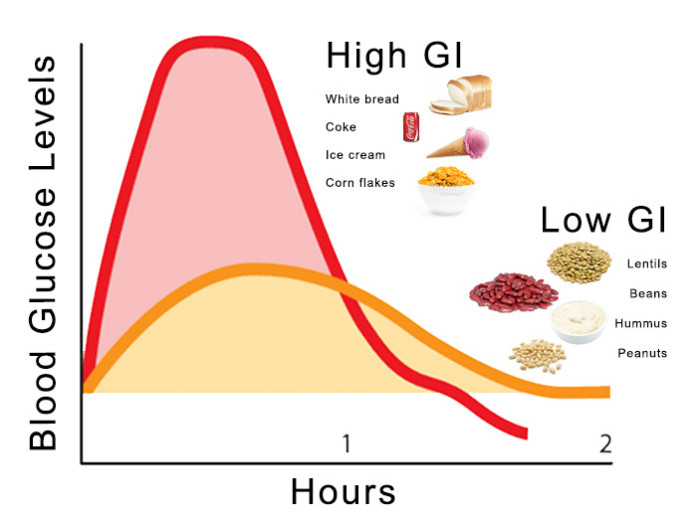How little I know about some basic stuff that have tremendous influence on the quality (and length) of my life sometimes amazes me. I’m due for a blood test to determine whether I have diabetes a week from now. In the meantime, I have a chance to learn more about the things that can make me diabetic and conduct some experiments on myself.
— CRITICAL UPDATE AT THE END —
So what gave me the scare? Unmistakable symptoms: fatigue, foggy brain, extreme dizziness close to the point of fainting.
I’ve been trying to eat healthy for the last couple of years. It was quite a challenge while travelling, and has been much easier for the past three months, most of which I stayed put in one single place. Or so I thought.
I had realized long ago that eating bread, especially the kind that’s easily accessible, puffed me up and made me constipated. So I quit bread for the most part. I’d normally eat eggs with some veggies and cheese for breakfast, or muesli, oatmeal with some fresh or dried fruit. Sounds healthy enough, doesn’t it?
The only trouble with that sort of stuff is it contains very little carbs, which should actually make up for about 2/3 of our daily calorie intake. So my best guess is that all my symptoms were caused by low blood sugar levels and then sudden spikes and drops. That’s what I’m hoping for and that it’s nothing more serious even though the symptoms I was having felt very serious.
So then I started exploring how I could get more carbs into my body without eating bread. I apologize if what follows is elementary stuff for most of you, but nobody ever told me this before…
So the gist of things is there are so called complex carbs (the good kind) and simple carbs (the bad kind). The main difference between them is complex carbs come with some fiber attached by nature and simple carbs have been stripped of their fiber (by man). That’s the difference between brown rice and white rice or whole grain flour and white flour.
And the reason all that is important and how it relates to diabetes is the way the body deals with them.
What fiber does in a nutshell, is it slows down the absorption of sugars. When you eat a Mars bar or a bowl of pasta made of white flour, your blood sugar level spikes up immediately, because the sugar from those carbs get into your blood straight away. When you eat a bowl of lentils though, its fiber content will make sure that the sugar content is released gradually over a period of a few hours.
There is a whole science behind all this. One of the key concepts is the Glycemic Index:
“The glycemic index (GI) is a ranking of carbohydrates on a scale from 0 to 100 according to the extent to which they raise blood sugar levels after eating. Foods with a high GI are those which are rapidly digested and absorbed and result in marked fluctuations in blood sugar levels. Low-GI foods, by virtue of their slow digestion and absorption, produce gradual rises in blood sugar and insulin levels, and have proven benefits for health.”
The University of Sydney created a great resource for establishing where a certain food product takes place on the Glycemic range.
This is not all, however, as the GI index will only show you how different kinds of foods compare to one another. It doesn’t tell you the impact of eating a certain amount of that food. The number that does just that is Glycemic Load. The easiest way to understand this is by taking watermelon as an example. It has a high GI, but a typical serving of watermelon contains little carbohydrate, so the glycemic load of eating it is low.
Self.com has a pretty neat tool to determine the GL for almost any kind of food you can think of, as well as all sorts of nutritional data. It’ll tell you in an instant for instance that a 100 gram serving of lentils have a GL value of 7, which compares to 100 as the typical daily dose and to 39 of commercially prepared sponge cake.
Armed with this knowledge, I hope I can make the dizziness and foggy brain go away and that my blood test next week won’t show anything too bad… fingers crossed.
CRITICAL UPDATE: I’m not diabetic. I’ve also learnt a lot more about nutrition and how diet impacts our health since posting this. One of the things I didn’t know back then was that the effect of bad carbs I described above (although quite possibly responsible for dizziness, fatigue etc.) is not a direct cause of diabetes. It can be an indirect cause by making you fat first, which increases your risk factor for diabetes. But eating sugar – refined or natural – by itself does not cause diabetes (talking about type 2 here). I was quite shocked to learn that fat does. Fat is directly responsible for insulin resistance and it inhibits the muscles’ ability to absorb sugar from the blood. And the effect is instant. It happens right after a meal and every meal. See it for yourself:

Leave a Reply